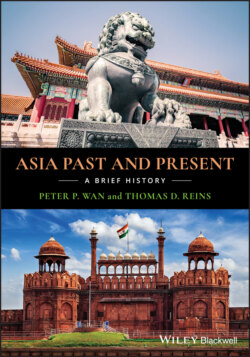Читать книгу Asia Past and Present - Peter P. Wan - Страница 78
Premodern Korea Ancient Korea: The Land and the People
ОглавлениеThe Korean Peninsula is about 600 miles long and 125–200 miles wide. It borders with China and Russia to the north, and its southernmost shore is less than 120 miles from Japan across the ocean. A massive mountain range runs along its eastern coastline, leaving most of its plains and valleys to the west and south. Only 14% of its territory is fit for cultivation.
The ancestors of modern‐day Koreans were migrants from Siberia and Manchuria who settled on the Korean Peninsula. Ethnically, the Koreans and the Japanese share a common origin with the indigenous people of Siberia and Manchuria. Linguistically, they both speak an Altaic language, which is unrelated to Han Chinese. Early Koreans were a tribal people who relied on fishing, hunting, and gathering for subsistence. As agriculture grew, they built villages and towns. Chinese know‐how, from early crop growing and animal husbandry to later metallurgy, flowed from China to Korea, and enabled Korean civilization to advance at a much faster pace than what was normal for other civilizations. This cultural influence was then relayed to Japan. The Koreans also adopted the Chinese writing system (Han Chinese characters), Confucianism, and China’s centralized bureaucratic structure of government. Korea is part of the cultural sphere of Confucianism, along with China, Japan, and Vietnam.
Archaeological discoveries suggest that humanlike beings inhabited the Korean Peninsula as far back as 700,000 BCE, they entered the Stone Age around 500,000 BCE, local bronze production began around the eighth century BCE, and local iron production began around the third century BCE.
